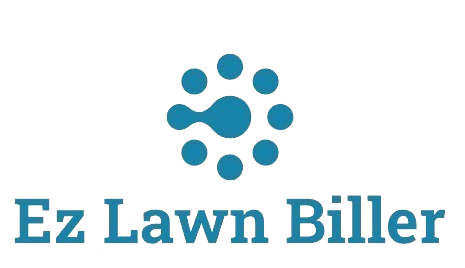Optimize routes Best Practices for Lawn Care Pros
Optimize Routes: Best Practices for Lawn Care Pros
In the competitive world of lawn care, optimizing routes is not just a matter of convenience; it’s a strategy for maximizing efficiency and profitability. This blog post will explore essential practices that lawn care professionals can employ to streamline their operations and ensure they deliver top-notch service to their clients.
Introduction
For lawn care professionals, effective route optimization is vital to enhancing productivity and reducing operational costs. As a lawn service provider, you want to maximize the number of clients you can service in a day while minimizing travel time and fuel expenses. In this article, we will discuss the best practices for optimizing routes, the significance of leveraging technology, and how tools like Lawn Biller Software can support your efforts.
Understanding Route Optimization
Route optimization involves determining the most efficient path for service delivery. For lawn care professionals, this can mean planning the day’s schedule in a way that reduces time on the road while maximizing the number of lawns serviced. Studies show that inefficient routing can increase costs significantly, with fuel consumption being a major factor. By minimizing unnecessary driving time, lawn care pros can enhance their bottom line.
One common approach to route optimization is to utilize geographic information systems (GIS) or route optimization software that considers traffic patterns, distance, and customer locations. This technology allows lawn care professionals to create efficient routes that save time and resources.
Leveraging Technology for Better Route Management
In today’s digital age, technology plays a pivotal role in optimizing business operations. Lawn care companies can benefit significantly from adopting technologies such as mobile apps and cloud-based software.
One such tool is the lawn service software offered by EZ Lawn Biller, which provides features designed specifically for lawn care businesses. By integrating a service company software into your operations, you can streamline scheduling, invoicing, and communication with clients.
Using these tools, lawn care companies can track service history and client preferences, allowing for better route planning and customer satisfaction. For instance, if a technician knows a particular area is prone to heavy traffic during certain hours, they can adjust their schedule accordingly.
The Importance of Efficient Scheduling
Efficient scheduling is closely linked to effective route optimization. Creating a service calendar that prioritizes clients based on location and service frequency can help lawn care professionals maximize their daily output.
For example, a lawn care provider servicing homes in neighboring suburbs can plan their schedule to service those areas consecutively, which reduces travel time. Additionally, implementing recurring services for regular clients can lead to predictable scheduling, allowing businesses to plan their routes better.
Moreover, using a lawn service app allows for real-time updates and notifications, which can be valuable when adjustments are needed due to weather changes or client requests. This flexibility can enhance customer retention by ensuring that clients receive reliable and timely service.
Analyzing Route Efficiency
Analyzing past route performance is crucial for continuous improvement. By keeping detailed records of travel times, fuel consumption, and service completion rates, lawn care professionals can identify patterns and areas for improvement.
Using reporting features available in service company software can provide insights into which routes are most efficient and which require adjustments. Tracking metrics such as average time spent per job and fuel costs can help lawn care providers make informed decisions about their operations.
Furthermore, conducting regular reviews of routing strategies can lead to more informed scheduling decisions and ultimately increase profitability. The use of analytics can help lawn service providers pinpoint inefficiencies that might be costing them valuable time and resources.
Integrating Customer Feedback
Another vital component of route optimization is the integration of customer feedback. Understanding client preferences and service requirements can significantly impact scheduling and routing decisions.
Encouraging clients to provide feedback on their service experience can help lawn care businesses refine their offerings. For example, if several clients mention that they prefer morning services, lawn care professionals can adjust their schedules to accommodate these requests, making the most efficient use of their time and resources.
Additionally, leveraging client management features of a lawn company app can aid in keeping track of these preferences, ensuring that the scheduling process aligns with customer expectations.
Practical Tips for Lawn Care Pros
To enhance route optimization, lawn care professionals can adopt several best practices:
- Plan Routes the Night Before: Take time to analyze customer locations and plan routes ahead of time. This preparation can save valuable minutes in the morning and ensure a smooth start to the day.
- Group Nearby Jobs: Schedule jobs that are close together to reduce travel time. Use route optimization tools to visualize the best paths between services.
- Monitor Traffic Patterns: Be aware of rush hours and local events that could impact travel times. Adjusting schedules to avoid heavy traffic can significantly enhance efficiency.
- Stay Flexible: Clients may change their service needs or availability. Keeping a flexible schedule allows lawn care providers to adapt quickly and still meet customer expectations.
- Utilize Route Optimization Software: Invest in robust software solutions like Lawn Biller Software that offer features tailored to lawn care businesses. These tools can automate scheduling and provide real-time navigation, allowing for more efficient route management.
Benefits of Route Optimization
The advantages of effective route optimization extend beyond just improved efficiency. Lawn care professionals can experience several significant benefits, including:
- Cost Savings: By minimizing fuel consumption and wear and tear on vehicles, route optimization can lead to substantial savings for lawn care businesses.
- Increased Client Satisfaction: Timely service delivery enhances customer satisfaction. Clients appreciate punctuality, which can lead to repeat business and referrals.
- Higher Productivity: Optimized routes allow lawn care professionals to service more clients in less time, increasing overall productivity and revenue.
- Enhanced Staff Morale: When employees spend less time stuck in traffic and more time serving clients, job satisfaction increases, leading to a happier and more motivated workforce.
Conclusion
In conclusion, optimizing routes is a critical component of running a successful lawn care business. By leveraging technology, efficient scheduling, and customer feedback, lawn care professionals can streamline their operations and enhance productivity.
The significance of route optimization cannot be understated—it directly impacts profitability and customer satisfaction. As the lawn care industry continues to evolve, embracing best practices for route optimization will set businesses apart from the competition. To take the first step toward enhancing your lawn care operations, consider implementing lawn billing software designed to meet your unique needs and simplify your processes.
Start optimizing today, and watch your lawn care business thrive!




